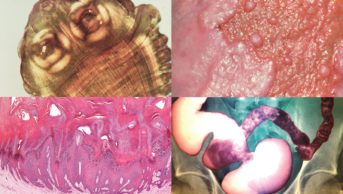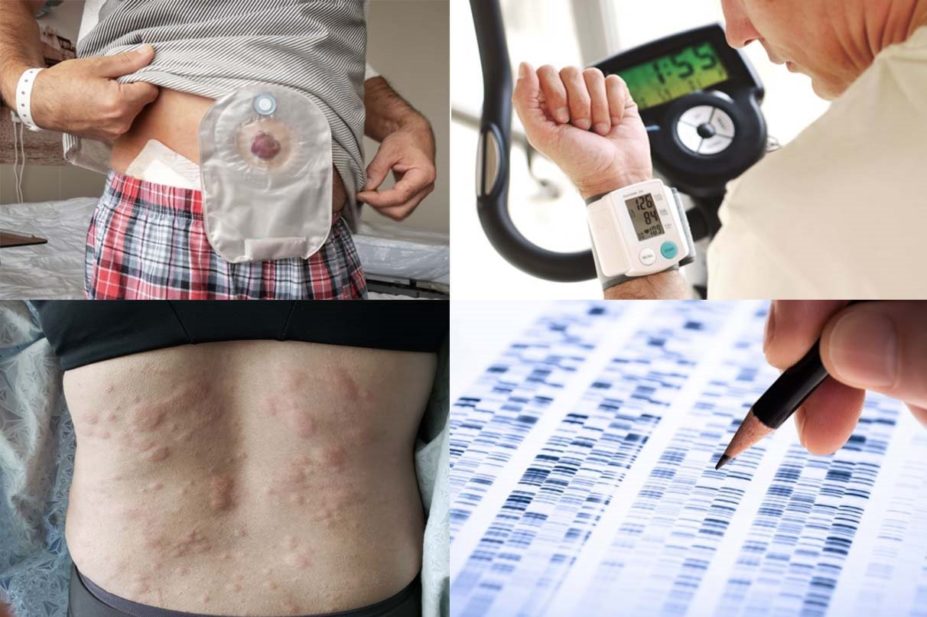
Shutterstock.com/Science Photo Library
This past year has been a strain on everyone, but none more so than healthcare professionals. In addition to developing the skills to combat a pandemic, pharmacists have had to develop intelligent, varied ways of working, all while continuing their professional development.
This end-of-year quiz highlights some of the essential learning that pharmacists used The Pharmaceutical Journal for in 2020. This learning is broken down by clinical area, giving you the opportunity to refresh your subject knowledge and identify any areas that would benefit from focused learning ahead of revalidation. The answers to the quiz can be found at the end of this article.
Mental health
1. What percentage of patients with depression experience symptoms of insomnia?
A: Around 10%
B: Around 25%
C: Around 50%
D: Around 60%
E: Around 75%
From: ‘Encouraging self-care and positive lifestyle changes in patients with depression’
2. Which of the following are symptoms of serotonin syndrome?
A: Paranoia and insomnia
B: Low sex drive and difficulties achieving orgasm
C: Confusion and agitation
D: Dizziness and drowsiness
E: Indigestion and loss of appetite
From: ‘Case-based learning: anxiety disorders’
3. What is the most common anxiety disorder?
A: Separation anxiety
B: Phobic disorder
C: Generalised anxiety disorder
D: Social anxiety disorder
E: Panic disorder
From: ‘Case-based learning: anxiety disorders’
Women’s health
4. Which unlicensed treatment may be used in adolescents with polycystic ovary syndrome?
A: Clomifene
B: Tamoxifen
C: Metformin
D: Exemestane
E: Leuprorelin
From: ‘Case-based learning: management of polycystic ovary syndrome’
5. Which of the following is not a common symptom of PCOS?
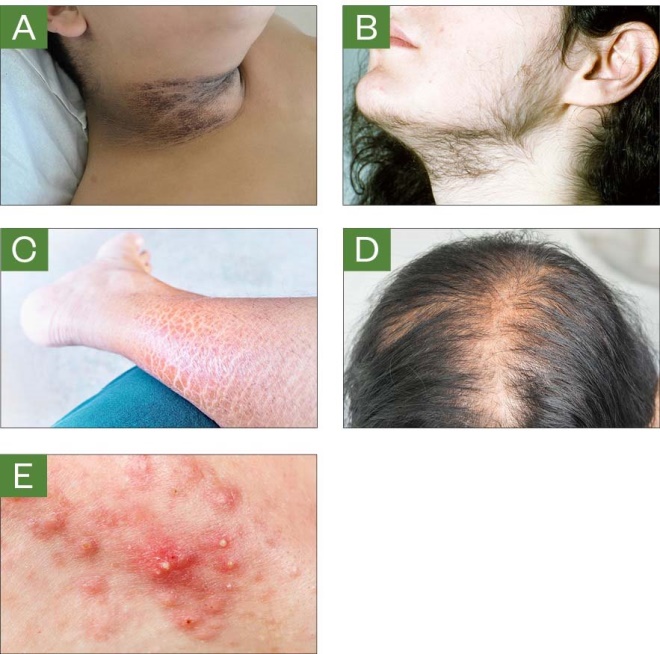
Source: Shutterstock.com/Science Photo Library
From: ‘Case-based learning: management of polycystic ovary syndrome’
Allergy
6. Which of the following comorbidities carries an increased risk of anaphylaxis?
A: Cardiovascular disease
B: Stroke
C: Hyperhidrosis
D: Non-alcoholic fatty liver disease
E: Pancreatitis
From: ‘Anaphylaxis: symptoms, causes and diagnosis’
7. Cutaneous symptoms are common in anaphylaxis. What presentation is depicted below?
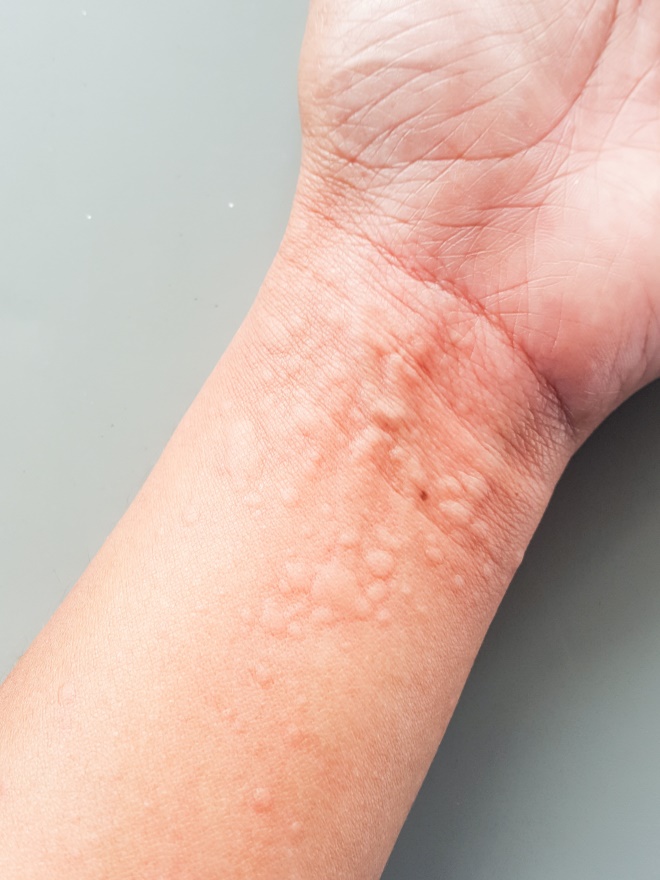
Source: Shutterstock.com
A: Angioedema
B: Urticaria
C: Cyanosis
D: Lichen planus
E: Dermatomyositis
From: ‘Anaphylaxis: symptoms, causes and diagnosis’
Gene therapy
8. The pharmacogene SLCO1B1 can be used to identify patients at risk for side effects of which medication?
A: Venlafaxine
B: Clopidogrel
C: Abacavir
D: Flucloxacillin
E: Simvastatin
From: ‘Pharmacogenomic testing and its future in community pharmacy’
Consultations
9. The CONSULT checklist aims to aid pharmacists and pharmacy staff in completing remote consultations. What does CONSULT stand for?
A: Consider, organise, necessary, start, undertake, listen, terminate
B: Concise, objective, needed, stratify, understood, legacy, therapeutic
C: Capture, output, narrative, scrutinize, underpin, liability, topical
D: Category, opportunity, notification, specialise, undergo, local, transform
E: Communication, observations, notes, stabilise, universal, lifestyle, time-saving
From: ‘Remote consultations: how pharmacy teams can practise them successfully’
Hypertension
10. In clinical settings, which of the following blood pressure readings proceeds a diagnosis of hypertension?
A: ≥120/80mmHg
B: ≥90/60mmHg
C: ≥140/90mmHg
D: ≥130/70mmHg
E: ≥100/60mmHg
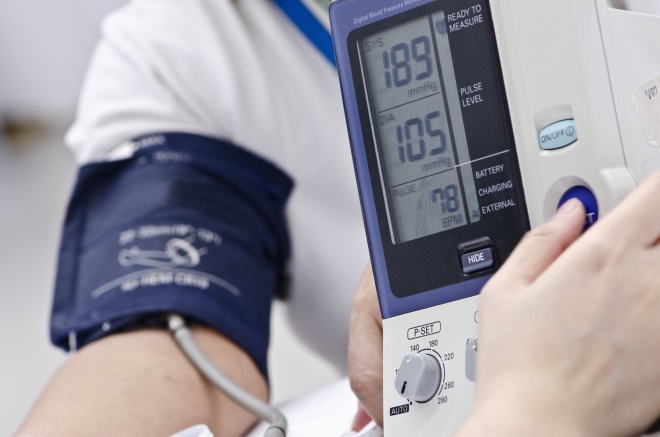
Source: Shutterstock.com
From: ‘Managing hypertension: the role of diet and exercise’
11. Non-pharmacological interventions that address diet, exercise and weight have been found to reduce systolic blood pressure and diastolic blood pressure by how much?
A: Systolic: 5mmHg; diastolic 2.5mmHg
B: Systolic: 10.2mmHg; diastolic 5.3mmHg
C: Systolic: 6.8mmHg; diastolic 10.5mmHg
D: Systolic: 12.5mmHg; diastolic 7.9mmHg
E: Systolic: 15.4mmHg; diastolic 9.6mmHg
From: ‘Managing hypertension: the role of diet and exercise’
Surgery
12. Which of the following do not require avoidance or close monitoring in stoma patients?
A: Loperamide
B: Antacids
C: Digoxin
D: Laxatives
E: Proton pump inhibitors
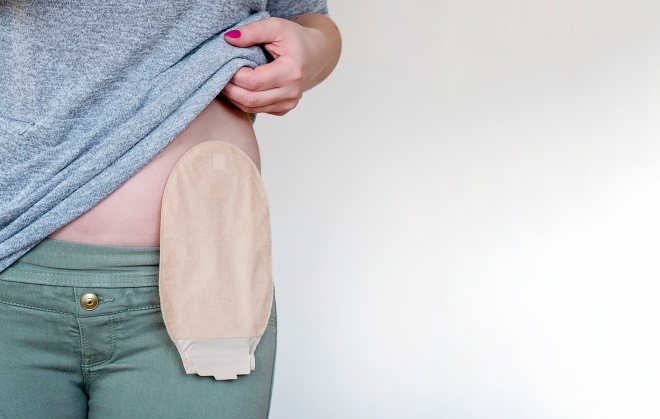
Source: Shutterstock.com
From: ‘Pharmaceutical considerations for patients with stomas’
13. Which nutritional deficiency is common in ileostomy patients?
A: Vitamin B12
B: Calcium
C: Vitamin D
D: Iodine
E: Vitamin K
From: ‘Pharmaceutical considerations for patients with stomas’
Respiratory tract diseases
14. According to National Institute for Health and Care Excellence guidelines, which of the following symptoms could be used to distinguish between bacterial and COVID-19-related pneumonia
A: Tachycardia
B: Pleuritic pain
C: Nausea or vomiting
D: Tachypnea
E: Fever
From: ‘Community management of pneumonia and suspected COVID-19’
15. Doxycycline is the first-choice oral antibiotic for suspected/confirmed bacterial pneumonia. What should patients who have been prescribed doxycycline be cautioned to avoid?
A: Alcohol
B: Grapefruit
C: Use of heavy machinery
D: Direct sunlight
E: Liquorice
From: ‘Community management of pneumonia and suspected COVID-19’
| Answers | |
|---|---|
| 1. E | 9. A |
| 2. C | 10. C |
| 3. D | 11. D |
| 4. C | 12. E |
| 5. C | 13. A |
| 6. A | 14. B |
| 7. B | 15. D |
| 8. E | |
You might also be interested in…
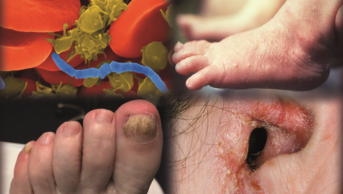
Highlights of CPD and learning in 2017
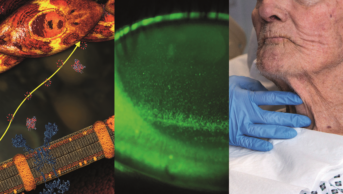
Highlights of CPD and learning in 2016
